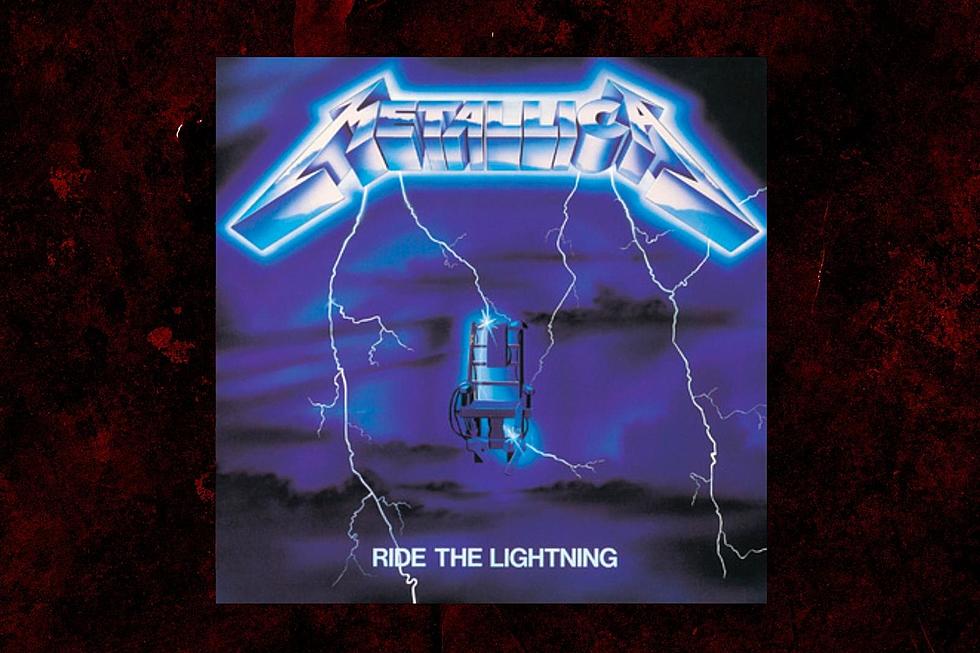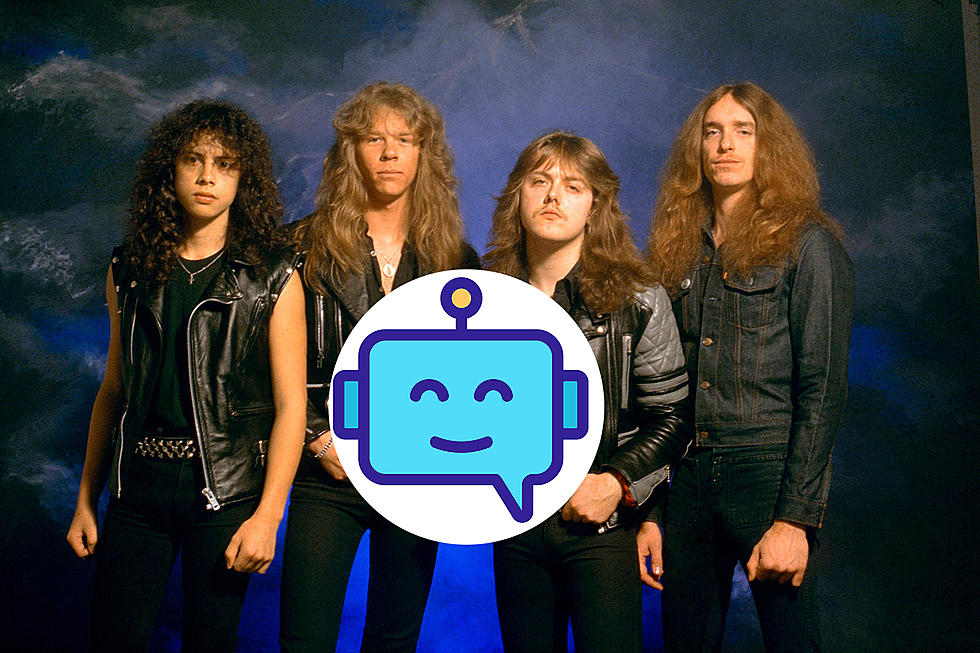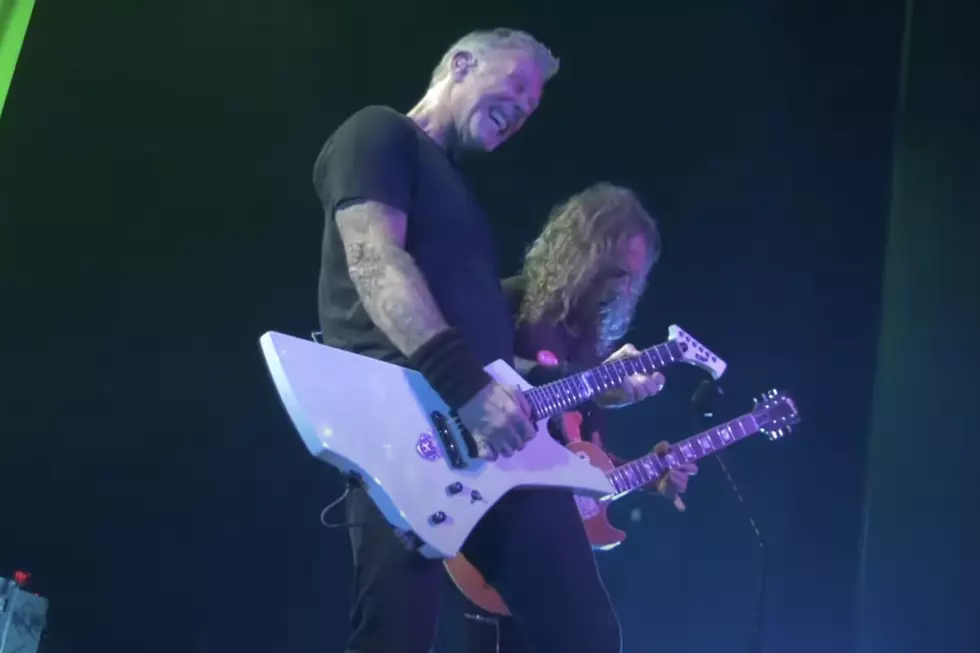
Metallica, ‘Ride the Lightning’ – Album Overview
Metallica’s debut album Kill ‘Em All was a thrash masterpiece and established the band as a force to be reckoned with. The songs were raw and potent, an audio punch to the gut.
Their second effort, 1984‘s Ride the Lightning, was a quantum leap forward, especially in terms of the complexity of the songwriting. It bridged the gap from the balls-out aggressive approach of their debut and the longer, epic songs of their later albums.
Ride the Lightning was recorded in Denmark, Lars Ulrich’s home country. It takes several years for Metallica to record an album these days, but back in '84 they knocked out their sophomore effort in less than a month. Flemming Rasmussen and Mark Whitaker produced Ride the Lightning at Sweet Silence Studios in Copenhagen.
Watch Metallica Perform "Ride the Lightning" Live in 1985
The band was much more involved in the production process for Ride the Lightning, so much so that they received producer credits on the album. The band was on tour in Europe at the time of the recording, opening for Venom. The album—considered by many fans to be their best (although Master of Puppets is also in that debate)—and includes several iconic songs such as "Fade to Black" and "For Whom the Bell Tolls."

Megaforce Records released Ride the Lightning on July 30, 1984. A couple months later Metallica signed a deal with major label Elektra Records, who re-released the album on Nov. 19, 1984. It only peaked at No. 100 on the Billboard album chart, but would go on to sell more than 5 million copies.
Ride the Lightning Track by Track
"Fight Fire With Fire"
It was obvious from the opening acoustic intro of "Fight Fire With Fire" that Metallica had stepped up their songwriting chops. The musicianship was improved as well, allowing them to try different things and expand their musical horizons. The lyrics tackle the topic of Armageddon and the end of the world.
"Ride the Lightning"
Even though Dave Mustaine had been out of the band for a few years at this point, he still receives songwriting credit on the album’s title track. The pummeling song has memorable riffs, and the lyrics are written from the perspective of somebody preparing to be electrocuted in an electric chair. More than a gruesome anticipation of death, it’s an indictment of the criminal justice system.
"For Whom the Bell Tolls"
Cliff Burton opens "For Whom the Bell Tolls" on bass, although it sounds like a guitar. Hetfield’s vocals don’t kick in until more than two minutes of the song have elapsed. The song is based on a section of the Ernest Hemingway novel of the same name. It was released as a single, but did not chart. The tolling bells from the song are used by the Chicago Bears before kickoffs.
"Fade to Black"
This was Metallica's first foray into a slow tempo song, which drew criticism from thrashers upset at the band for ‘selling out' by doing a ballad. The subject matter was controversial as well, dealing with suicide. When Hetfield wrote the lyrics, he was at a low point after a bunch of the band’s gear was stolen, including an amp his mother gave him just before her death from cancer. "Fade To Black" was also the first song Kirk Hammett received co-writing credit on. In 1992, the band was playing the song at a show in Montreal when Hetfield suffered major burns in a pyro accident.
"Trapped Under Ice"
Closest to the material on Kill ‘Em All, Hammett used part of a riff he wrote while in Exodus for this track. It’s about a person trapped in a cryogenics chamber. During that era Metallica rarely played "Trapped Under Ice" live.
"Escape"
Originally called "The Hammer," this is probably the least known of the songs on Ride the Lightning. It was never played live during the time of its release, and it wasn’t until Metallica played the entire album at 2012‘s Orion Music + More Festival that "Escape" was played in its entirety. The song deals with an escaped prisoner, and is actually pretty catchy. Obviously the band thought otherwise, relegating it to obscurity.
"Creeping Death"
Hetfield went to the Bible for the lyrics to this song, although it was inspired by the movie The Ten Commandments. It talks about the ten plagues of Egypt from the book of Exodus. The creeping death was the final plague, the angel of death sent by God to kill every family’s first-born son.
The chorus "Die by my hand" was brought in by Hammett and is an adaptation of an Exodus song called "Dying By His Hand." "Creeping Death" has always been a fan favorite, and is the second most-played Metallica live song, behind "Master of Puppets." It was released as a single in Europe.
"The Call of Ktulu"
The album closer is the nearly 9-minute instrumental tour-de-force "The Call of Ktulu." Cliff Burton was a big fan of the horror author H.P. Lovecraft, and one of his famous short stories was "The Call Of Cthulhu." Most of the music for the song was written by Dave Mustaine, and it was originally called "When Hell Freezes Over." It was the first instrumental that all four band members played on. Just Burton and Ulrich were on "(Anesthesia) Pulling Teeth" on Kill ‘Em All. "The Call of Ktulu" won a Grammy, but not until 2000 after it was included on Metallica’s 1999 orchestral album S&M.
Watch Metallica Perform "Trapped Under Ice" Live in Italy
Here Are Some of Our Favorite Metallica T-Shirts
Some of Our Favorite Live Photos of Lars Ulrich
More From Ultimate Metallica









